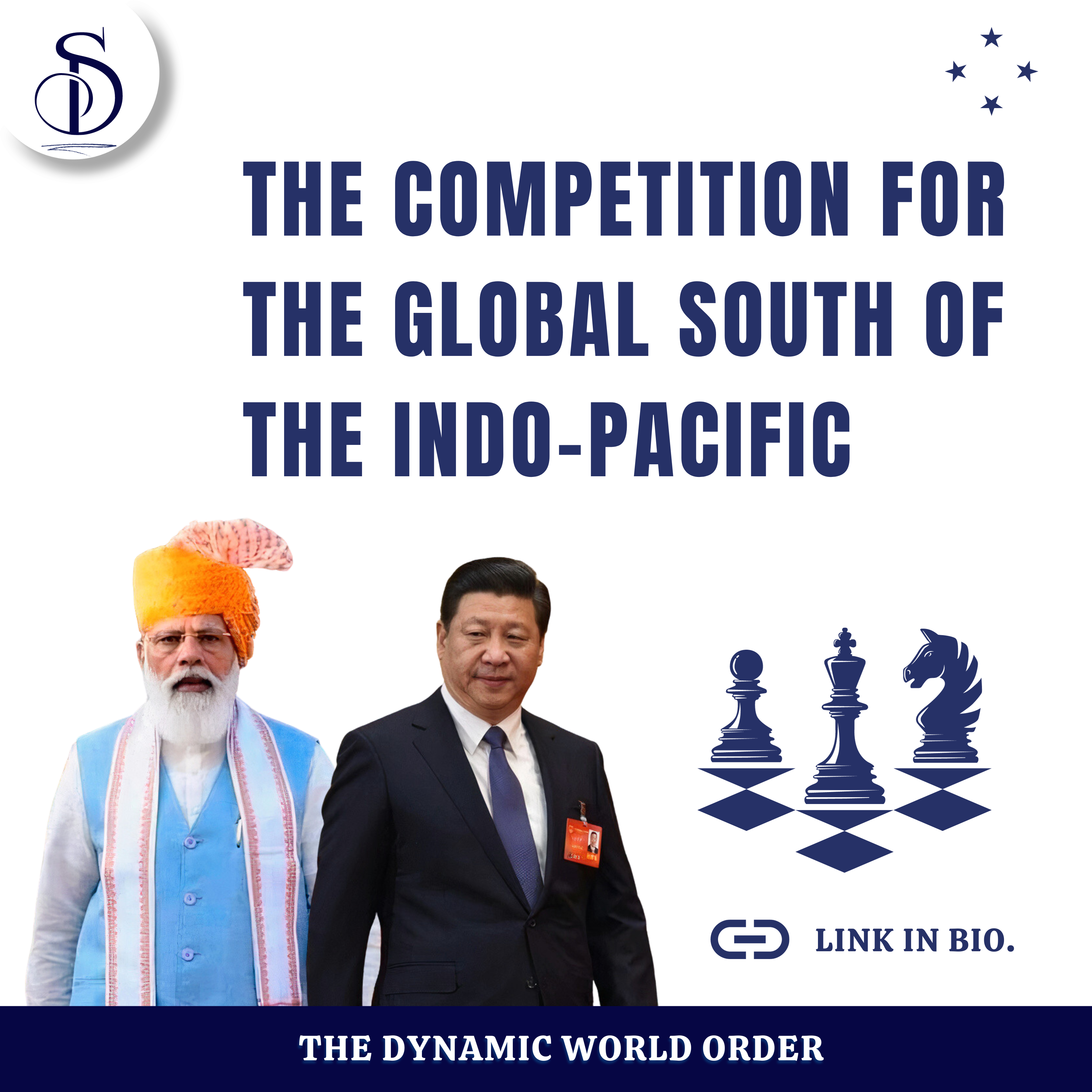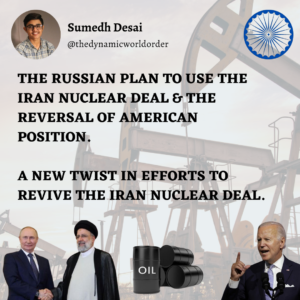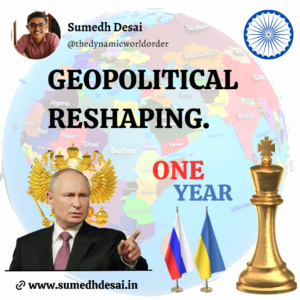“Global South” found its origin in the mind of former West German Chancellor Willy Brandt in the 1980s. Chancellor Brandt seeked to divide the world into more developed countries and less developed countries based on the parameter of per-capita GDP. Back in 1964, two post-colonial countries got together to promote their economic inclusion with the international community without having to choose sides. These countries called themselves the G77, or the Group of 77. Now that they comprise around 134 countries, the Grouping is best placed to be termed as the “Reflection of Representation from the Global South”. The United Nations have also designated a UN Office for South-South Cooperation to help these countries.
Above the geoeconomic, geopolitical and historical angle of sharing the common pain of colonisation, Global South is a developmental concept that reflects the contemporary world order. Experts around the world have touted the 21st century as the Asian Century with Indo-Pacific as the main geopolitical theatre. Despite there being multiple interpretations of what exactly constitutes the “Global South”, the fundamental factor to consider is that more-or-less, half of the Indo-Pacific constitutes the Global South.
The lexicon used for peripheral countries back during the era of the Cold War, was “The Third World”. However, the unipolar moment compelled re-defining narratives to address different regions of the world. Call it a manifestation of the World Systems Theory, but the core countries (the Developed / Global North) and the peripheral countries (the Developing / Global South) fit into the puzzle of International Economic Order.
The UN defines Global South as a loose term for referring to the developing world. However, the race to “develop” the developing world has intensified from all major players of the world. India’s Presidency of G20 has been nothing short of history for the Global South. The access to the high table accorded by India to various developing countries from Latin America, Africa, the Pacific Islands has been well received and acknowledged by people in these countries.
PM Modi hosted the “Voice of the Global South Summit” early on in the Presidency of India. Over 120 countries were invited for deliberate discussions to understand the “voice” of the Global South and use India’s G20 Presidency to further advance this “voice”. With the inclusion of the African Union in the G20, India has diversified the control of the West in the G20 after diversifying the Chinese control from BRICS with the inclusion of 6 new members – namely, Ethiopia, Egypt, Argentina, UAE, Saudi Arabia and Iran.
On the other hand, China is planning the Third Belt and Road Forum for International Cooperation in October 2023. It is expected that delegations from around 90 countries will be attending the forum in Beijing. Contrary to many who hailed BRICS as an alternative for the G7, the BRI Forum is China’s attempt to create an alternative multilateral institution to the western-dominated G7 & G20.
The West is also courting the Global South. The recent G7 that was hosted by Japan, saw discussions over advancing the interests of the Global South. There were delegations from the Pacific Island Countries (PICs) that were invited to these negotiations. The West understands the intricacies of not only supporting India’s agenda for the Global South but also frame their own agenda towards the development of the Global South. This makes India and the West a natural coalition of interests.
While on the other hand, Russia, for its part, has been quite open and explicit about the need to integrate the Global South into mainstream global developmental negotiations. The fact that Russia has a strong military presence outside its borders in Africa, shows the commitment it has to fight insurgencies & terrorism which are bleeding many countries, who constitute a part of the Global South. The Russian concept of a multipolar world hinges on an assumption that Russia-India-China can cooperate extensively to uplift the vulnerable section of the International community. However, the deep mistrust between Beijing and New Delhi has been a hindrance for Russia’s attempts at advancing multipolarity by diffusing Western hegemony.
The Global South has been impuissant to the 3Fs – Food, Fuel & Fertiliser crisis that has engulfed the world. These shocks are a direct result of the COVID-19 pandemic and the Russo-Ukraine War. While the West, India, China and Russia have redesigned their Great Power strategies to better accommodate the issues arising out of the Global South. Domains like health, education, counter-terrorism, climate change etc. will need the Global South to go out and search for partners and friends for help. The “access” to finance, investments and technology through multilateralism is what really counts for the countries of the Global South in 2023.
Global South is reinforcing the forces of “Multilateralism” in a world where suspicions have plagued globalisation. The very fact that a multipolar world order, that seeks to restore the Balance of Power from the Global North to the Global South, shows how critical the conception of the Global South is. More than 67% of the global population resides in the so-called “Global South” with around 50% being in the Indo-Pacific. The really critical players in this context are India and China, given the domestic capabilities that these Asian giants possess.
When we look at the Indo-Pacific in terms of the regions, we understand how countries frame their policies. We have ASEAN and South Pacific Island Countries to focus on. India, on its part, has been engaging with the ASEAN countries in spheres of defence and energy. The defence partnerships with Vietnam, Indonesia and the Philippines are growing stronger. PM Modi’s recent visit to the ASEAN Summit and the East Asian Summit is a testament to the fact that ASEAN is looking towards India to take up a greater role in the region that supports ASEAN’s Centrality.
The South Pacific Island Countries are caught up in the great power struggle between the Americans and the Chinese. For them, India is the third pole to balance out the rivalry between the US & China. PM Modi’s visit in early 2023 showed how India is raising their voice on the international forum. They hail Indian diplomacy as the one who accommodates their interests in a better manner than the two pacific giants. The US, the UK, France, Japan, EU and many more western countries have highlighted in their Indo-Pacific strategy that they prefer India playing a bigger role in the Indo-Pacific.
For China, ASEAN is a backyard that has to be kept neutral at all costs while the South Pacific is strategically very important. China is pushing back against the American island chains and hence, need to forge partnerships with countries that lie way beyond the third island chain. By doing so, China gets the advantage to simultaneously attack the first and the third island chain. Hence, China is economically integrating these countries by luring them of better offers than the Western counterparts. America has used the South Pacific as a test ground for its nuclear tests, in the early part of the Cold War. Those memories still haunt the policymakers in the region. This is the reason they feel more comfortable dealing with the Chinese than the Americans. However, through Congress, the Biden administration is pumping in his resources to the region.
The Global South of the Indo-Pacific is a stage for great power rivalries to come, like the Arctic. Destiny of the world will be decided by the major powers in a multipolar world. Invariably, the fact that India and China have forever championed the cause of the vulnerable, makes it a diplomatic battleground for India and China too.




